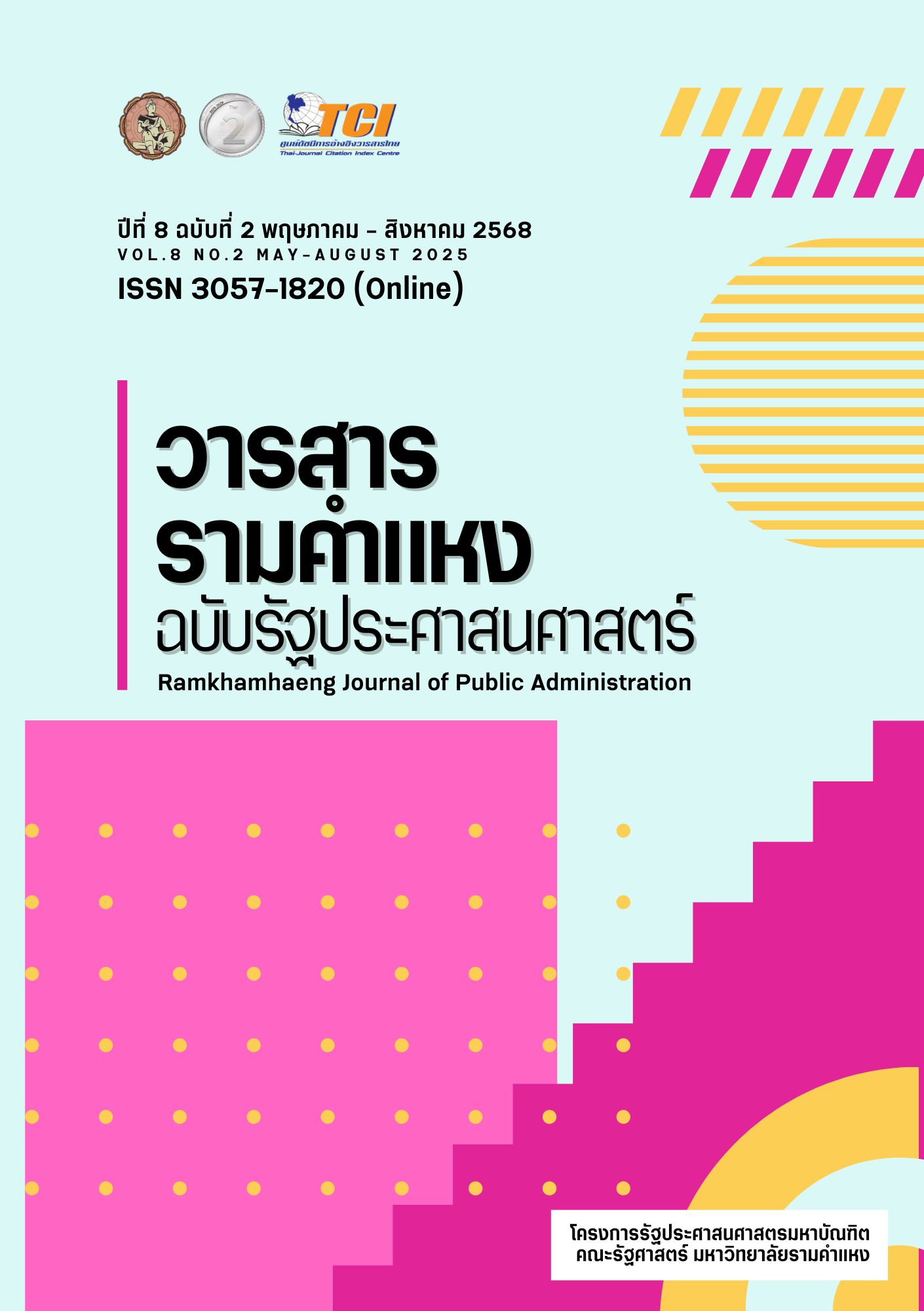[RETRACTED ARTICLE] Innovation in Carbon Credit management to sustainably increase income of rubber farmers
Keywords:
Carbon Credits, Voluntary Carbon Market, Rubber Plantations, Carbon SequestrationAbstract
The editorial board have considerably attracted this article from publication for the author violated regulations which posted in author’s guideline. It states that article submitted must not be published elsewhere or is not currently under consideration for publication in other academic journals. We found that this paper has already been published in Western University Research Journal of Humanities and Social Science 11(1) (January – April 2025), pp. 73-86.
We gracefully apologize all our readers for any inconvenience occurred.
References
จุฑาพร ทองนุ่น, พิชิต ลำไย, สันติ สุขสะอาด, และศุภศิษย์ ศรีอักขรินทร. (2565). พลวัตป่าไม้แลการกักเก็บคาร์บอนในช่วงเวลา 10 ปี ในพื้นที่อุทยานแห่งชาติลำน้ำน่าน จังหวัดอุตรดิตถ์ และจังหวัดแพร่. วารสารวนศาสตร์ไทย, 41(2), 48-62.
สุภาวรรณ เพ็ชศรี และ อํานาจ ชิดไธสง. (2553). ศักยภาพการเก็บกักคาร์บอนในสวนยางพาราของประเทศไทย. รายงานการประชุมวิชาการระดับชาติ เรื่องประเทศไทย กับภูมิอากาศโลก ครั้งที่ 1: ความเสี่ยงและโอกาสท้าทาย ในกลไกการจัดการสภาพภูมิอากาศโลก.
ประเสริฐ ภวสันต์, วรพจน์ กนกกันฑพงษ์, และ อาวีวรรณ มั่งมีชัย, (2558). การวิจัยเชิงนโยบายการจัดทำคาร์บอนเครดิต และประเมินความต้องการใช้น้ำ จากการดำเนินการปลูกสร้างสวนยางพารา ระยะที่ 3 ในภาคเหนือ ภาคกลาง และภาคตะวันออก 250,000 ไร่: รายงานฉบับสมบูรณ์. สำนักงานคณะกรรมการส่งเสริมวิทยาศาสตร์ วิจัยและนวัตกรรม.
องค์การบริหารก๊าซเรือนกระจก (องค์การมหาชน). (2566). ราคาซื้อ-ขายคาร์บอนเครดิตช่วง 6 เดือนแรกของปี 2566. สืบค้นจาก https://www.bangkokbiznews.com/environment/1086018
ANRPC. (2010). Natural Rubber Trends & Statistics. Association of Natural Rubber Producing Countries, 2(3), 1-27.
Carbon Dioxide Information Analysis Center (CDIAC). (2019). ปริมาณการปล่อยก๊าซคาร์บอนไดออกไซด์. Retrieved from https://themomentum.co/world-emissions/
Nature. (2021). Farmer Perspectives on Carbon Markets Incentivizing Agricultural Soil Carbon Sequestration. Retrieved from https://www.nature.com/articles/s41558-021-00945-2
Rhodium Group. (2023). Global Greenhouse Gas Emissions: 1990-2021 and Preliminary 2022 Estimates, retrieved from https://rhg.com/research/global-greenhouse-gas-emissions-2022/
Stavins, R. N. (2020). The future of US carbon-pricing policy. Environmental and Energy Policy and the Economy, 1(1), 8-64.
VERRA. (2023). VCS certification statistics “Projects certified for total greenhouse gas emissions”. Retrieved from https://registry.verra.org/app/search/VCS/Registered
World Bank. (2023). Price evolution in ETS from 2018-2023. Retrieved from https://openknowledge.worldbank.org/entities/publication/58f2a409-9bb7-4ee6-899d-be47835c838f
Downloads
Published
How to Cite
Issue
Section
Categories
License
Copyright (c) 2025 ณกรณ์ ตรรกวิรพัท

This work is licensed under a Creative Commons Attribution-NonCommercial-NoDerivatives 4.0 International License.



